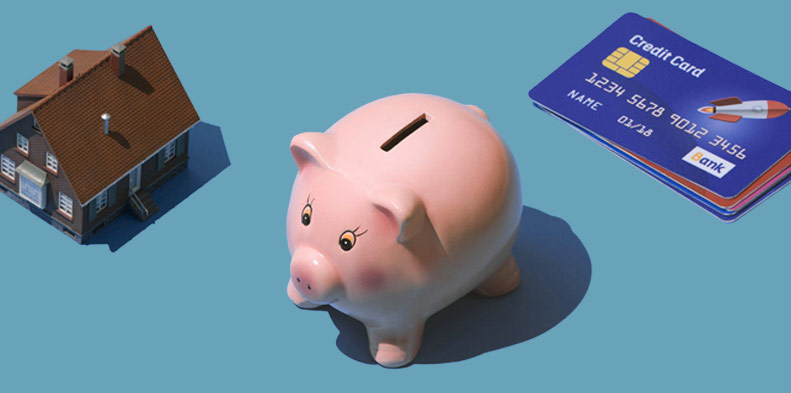TFSAs vs. RRSPs: Deciding is easier than you may think

A TFSA is the place to save for all those things that come before retirement. Whether it’s a house, car or maybe even travel plans you can take advantage of the choice and flexibility a Tax-Free Savings Account can offer.
There may be no more exciting time than when you finish university, enter the workforce and start building your personal and professional life. While “adulting” may be a bit nerve-racking, it’s when you’re in your twenties and thirties that you start setting financial goals and begin tackling your ambitions and aspirations.
At the same time, demands for your dollars start to increase. You might have trips to take, a mortgage to pay, a wedding to plan, children to feed and more. While there’s a lot you can read on how to prioritize your spending or how to save, all this information can be overwhelming. But don’t worry, we’re here to help.
While you hear a lot about investing with a registered retirement savings plan (RRSP), the tax-free savings account (TFSA) will likely become a big part of your financial future. It’s more flexible for those short- and medium-term goals, better early on in your career and offers more benefits the sooner you start using it.
While everyone’s situation is different, here are some reasons why the TFSA might be the right investment account for you.
TFSAs are more flexible for short- or medium-term goals
The first step is to create a vision of what you want your life to look like, says Michelle Munro, Fidelity Canada’s Director of Tax and Retirement Research. While having enough to retire on is a goal you’ll want to have at some point, it doesn’t need to be your main ambition right out of the gate.
You may want to put money away for a down payment on a house, or maybe you want to take a big trip with your friends. There are all kinds of short- to medium-term financial and life goals that you may have, many of which investing can help you achieve, she says.
It’s much easier to determine what account to use once you set your goals. RRSPs are intended for long-term retirement investing, whereas TFSAs have more flexibility. If most of your plans are short- or medium-term, then a TFSA could make sense. Why? Because it’s a lot easier to remove money from a TFSA than an RRSP, explains Munro.
When you take money out of an RRSP, you have to pay income tax on those withdrawals. You don’t have to pay taxes on TFSA withdrawals, which can then be recontributed in the following year.
“The TFSA gives you a lot more flexibility,” she says. “Especially for millennials who may be anticipating that life is going to throw a few curveballs.”
Like an RRSP, you can invest in all kinds of securities, such as exchange-traded funds (ETFs), mutual funds, stocks, bonds and more. That money can grow tax-free. Because of its flexibility, it’s an ideal account to start with. Whatever you’ve set aside for your goals can be invested in the market, where it can then grow.
TFSAs may be a better choice earlier on in your career
If your career is just starting, or if you’re further into it but not yet making as much as you one day will, a TFSA can come in handy.
Of course, the intention is that you will, at some point, earn more money. One strategy, explains Munro, is to put as much as you can into a TFSA when you’re younger, and then move those dollars into an RRSP when you’re in a high tax bracket. You’ll get the tax-free investment growth from the start, and later, potentially lower your tax bill and receive a substantial tax refund, which you can then reinvest in your RRSP or TFSA.
“The TFSA is more flexible for people who are earlier in their career,” says Munro. “Millennials in a lower income tax bracket may be better off in that account.”
RRSPs are especially beneficial when used by high-income earners who are well into their professional careers and who want to save a good chunk of their paycheque. You can usually put more money into an RRSP – 18% of your income up to a maximum of $32,490 in 2025 – than a TFSA, where contribution room grows by $7,000 every year regardless of income level. Your RRSP tax refund will also be larger if you’re in a high tax bracket.
Time’s on your side with a TFSA
You know you need to save, but you might be having difficulty knowing where to start. Blame analysis paralysis. Numerous studies have shown that when it comes to investing, there’s so much information and so much choice that our brains prevent us from making confident and informed investment decisions. While this has been a problem for decades, it’s particularly acute today – there are more investing and savings-related options now than ever before. The best way to prevent analysis paralysis and achieve your financial goals with ease is to push yourself to act soon, and that’s why the TFSA is increasing in popularity. Many Canadians are using it to invest at least something in the market. It doesn’t have to be thousands of dollars, either – even putting $100 per paycheque into an ETF can go a long way.
As your income increases, you can invest more; as your life evolves, you can easily recalibrate. You can also talk to an advisor who can help you determine what kinds of investments you should be using and how to adjust your goals or set new ones.
As soon as you start investing, the psychological barriers lessen, and saving will soon become a habit. As well, the earlier you start, the more time there is for your money to grow. As Munro says, “The best time to plant an oak tree was 20 years ago. The next best time is today.”
Michelle Munro is the Director of Tax and Retirement Research at Fidelity Investments Canada. She has over 20 years of career experience and possesses the intel that can help boost your savings and lower your tax bill.




